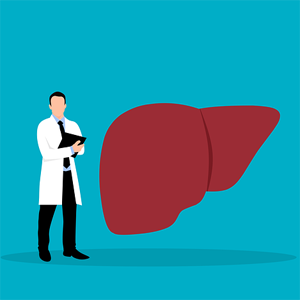The effect of Lactobacillus casei and Bacillus coagulans probiotics on liver damage induced by silver nanoparticles and expression of Bax, Bcl2 and Caspase 3 genes in male rats

Accepted: 21 June 2022
HTML: 5
All claims expressed in this article are solely those of the authors and do not necessarily represent those of their affiliated organizations, or those of the publisher, the editors and the reviewers. Any product that may be evaluated in this article or claim that may be made by its manufacturer is not guaranteed or endorsed by the publisher.
Authors
In this study, we aimed to evaluate the effect of Bacillus coagulans and Lactobacillus casei probiotics on liver damage induced by silver nanoparticles and expression of Bax, Bcl2 and Caspase 3 genes in rats. 32 adult male Wistar rats were divided into four healthy groups (control), the group receiving silver nanoparticles treated with L. casei, the group receiving silver nanoparticles treated with B. coagulans and the group receiving only silver nanoparticles. The effect of nanoparticles was induced by intraperitoneal injection of silver nanoparticles prepared from nettle at a dose of 50 mg/kg and entered the liver tissue through the bloodstream. Two days after injection, probiotic treatment with 109 CFU was performed by gavage for 30 days. One day after the last gavage, rat liver tissue weight was assessed. Also, the total amount of RNA was extracted from treated, and healthy tissues, as well as induced silver nanoparticles tissues, then evaluated by Real Time PCR. Data were evaluated using one-way Anova, Tukey test. Based on the biochemical results of this study, exposure of rats to different concentrations of silver nanoparticles compared with the control group caused a significant increase in the serum levels of alanine transaminase (ALT) and aspartate transaminase (AST), alkaline phosphatase (ALP), especially at high concentrations. Evaluation of damage and histopathological lesions showed that silver nanoparticles in different concentrations caused different damage to liver tissue, so that, necrosis, inflammatory cell infiltration and vascular degeneration were observed at different concentrations by silver nanoparticles. In the present study, the effects of L. casei cell extract on increasing the expression of Bax proapoptotic gene and decreasing Bcl2 gene expression in cancer cells and inducing programmed cell death were shown. In this study, the expression of Bax, Bcl-2 and Caspase-3 genes in the group receiving silver nanoparticles and in the groups treated with probiotics showed significant changes compared to the control group. It can be concluded that the function of silver nanoparticles and the effects of relative improvement of probiotics are from the internal route of apoptosis and factors such as dose, nanoparticle size and nanoparticle coating have an important role in the toxicity of silver nanoparticles, thus the destructive effects on liver tissue could be increased by increasing the concentration of silver nanoparticles.
How to Cite

This work is licensed under a Creative Commons Attribution-NonCommercial 4.0 International License.
PAGEPress has chosen to apply the Creative Commons Attribution NonCommercial 4.0 International License (CC BY-NC 4.0) to all manuscripts to be published.

 https://doi.org/10.4081/ejtm.2022.10673
https://doi.org/10.4081/ejtm.2022.10673



